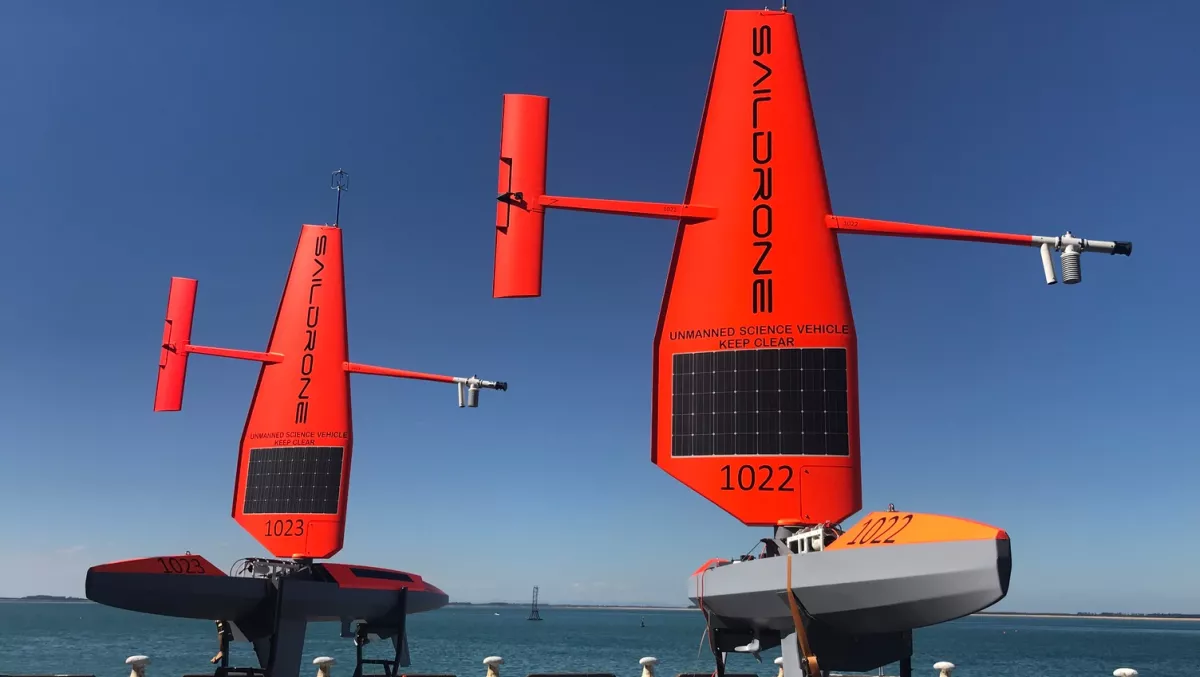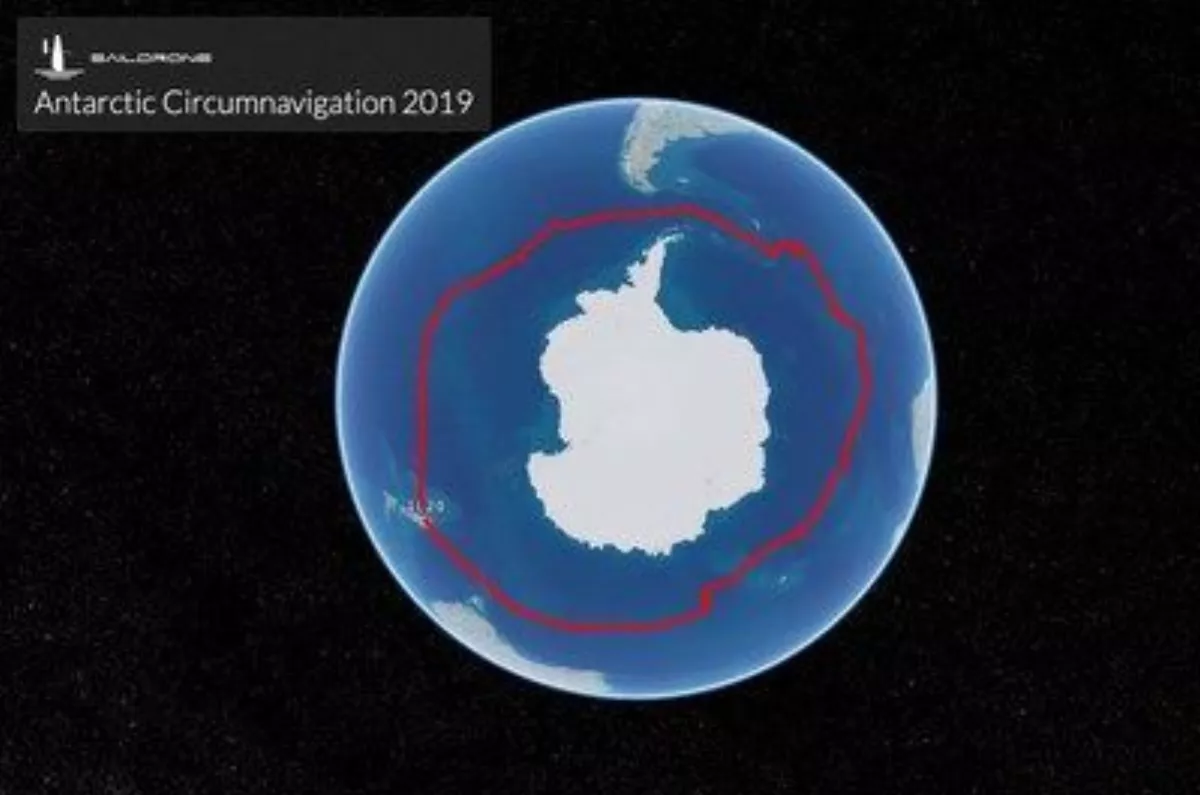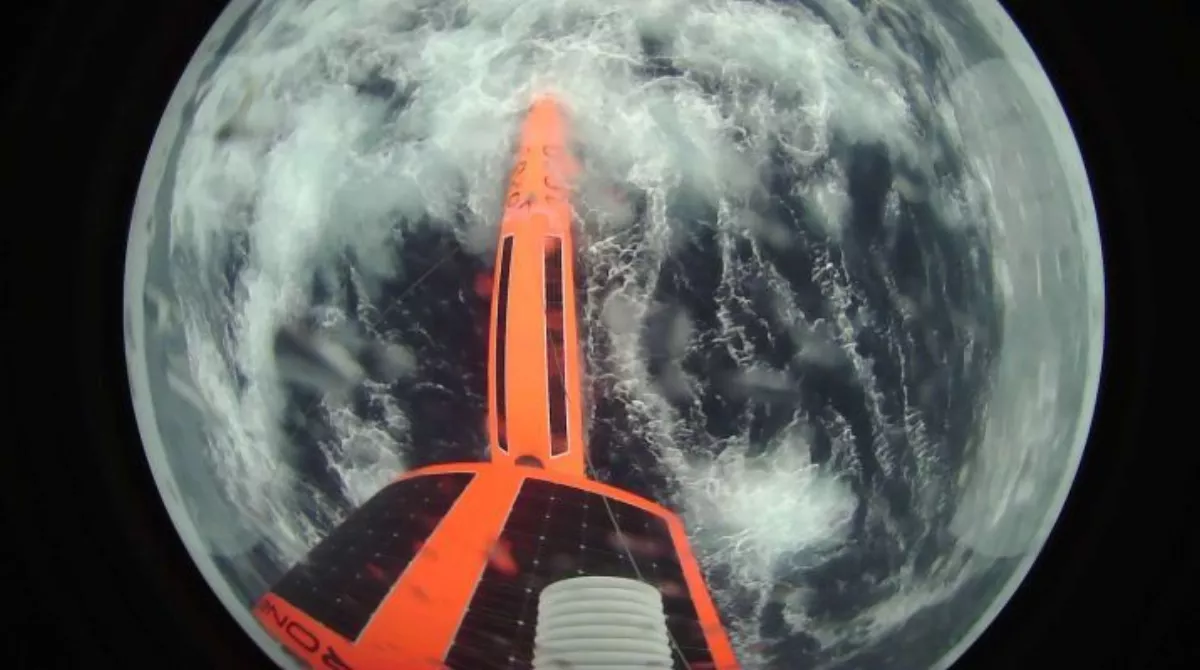
Saildrone completes first unmanned trip around Antarctica
Almost a year ago we covered the story of a saildrone that set off from San Francisco to New Zealand, but somehow it got lost along the way (read the story here).
The company behind the rogue drone, Saildrone, regrouped and decided to tackle a similar challenge – this time from Bluff to Antarctica – and this time it was successful.
Saildrone's wind-powered surface vehicle (called SD 20) is seven metres long and is now the world's first unmanned vehicle to circumnavigate Antarctica.
The saildrone left Southport in Bluff, New Zealand on January 19 and returned to the very same port on August 3. That's 196 days of travel and more than 22,000 kilometres in conditions such as freezing temperatures, 15-metre waves, 130 km/h winds, and even collisions with icebergs.

But this mission wasn't just to prove that you could sail an unmanned vehicle around Antarctica – it also had a lot of scientific equipment and partners.
SD 20 was equipped with a suite of climate-grade sensors and collected data in previously unchartered waters, enabling new key insights into ocean and climate processes.
The Saildrone also carried an instrument developed by National Atmospheric and Oceanographic Administration (NOAA) to measure carbon fluxes.
The saildrone recorded evidence that the Southern Ocean released significant carbon dioxide during the winter months a fact that could have major implications on global climate models.

"The extreme weather conditions of the Southern Ocean winter were the final frontier for Saildrone and with the completion of the Antarctic circumnavigation, there is now no part of the world's oceans that we cannot measure," says Saildrone founder and CEO Richard Jenkins.
"It is vital that we drastically improve the understanding of our oceans, which are one of the key drivers of our climate, and ultimately our future."
Oceanocrapher Dr. Adrienne Sutton says that it's a technological feat to have an autonomous platform that can survive the Southern Ocean and help to solve the ocean CO2 sink puzzle.
The mission wasn't without its challenges, either. Damage was inevitable (as were repairs and redeployments).

All data from the mission has been made publicly available to the global scientific community.
Science collaborators on this First Saildrone Antarctic Circumnavigation include experts from the following institutions: the US National Oceanic and Atmospheric Administration (NOAA), the US National Aeronautics and Space Administration (NASA), Australia's Commonwealth Scientific and Industrial Research Organisation (CSIRO), the Palmer Long-Term Ecological Research (LTER), the Scripps Institution of Oceanography, the Southern Ocean Observing System (SOOS), the Japan Agency for Marine-Earth Science and Technology (JAMSTEC), the Korea Polar Research Institute (KOPRI), the Norwegian Polar Institute, the University of Exeter, the University of Gothenburg, the Department of Marine Science, University of Otago, and the New Zealand National Institute of Water and Atmospheric Research (NIWA).


